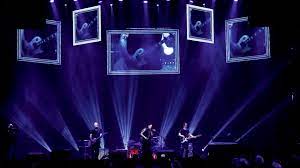 Creating a website that looks beautiful and functions effectively is a challenge that all web designers face. Aesthetics and functionality are two key components of website design, and finding the right balance between the two is crucial for a successful website. Mumbai’s top agency has mastered the art of balancing aesthetics and functionality in website design, and here are some lessons we can learn from them.
Creating a website that looks beautiful and functions effectively is a challenge that all web designers face. Aesthetics and functionality are two key components of website design, and finding the right balance between the two is crucial for a successful website. Mumbai’s top agency has mastered the art of balancing aesthetics and functionality in website design, and here are some lessons we can learn from them.
1.Understand the audience
Before starting any website design project, it’s essential to understand the target audience. Aesthetics and functionality can vary greatly depending on the audience. For example, a website aimed at millennials may have a more playful and modern aesthetic, while a website aimed at business professionals may have a more sophisticated and minimalist aesthetic. Understanding the audience allows designers to create a website that meets the needs and expectations of the target audience.
2.Keep it simple
Simplicity is key in website design. A website that is cluttered and confusing can be overwhelming for users, making it difficult for them to find what they’re looking for. Aesthetically, a cluttered website can look chaotic and unprofessional. Keeping the design simple and easy to navigate allows users to find what they need quickly and easily, and also gives the website a clean and polished aesthetic.
3.Use whitespace
Whitespace is the empty space between elements on a website. While it may seem like wasted space, whitespace is an important design element that can improve both aesthetics and functionality. Whitespace can help to create a sense of balance and harmony in the design, making it easier for users to focus on the content. Functionally, whitespace can also make it easier for users to read and navigate the website.
4.Consider user experience
User experience is a key factor in website design. Aesthetically, a website that is difficult to use can be frustrating for users, leading to a negative perception of the website. Functionally, a website that is difficult to use can also lead to users abandoning the website altogether. Considering user experience in the design process allows designers to create a website that is both aesthetically pleasing and easy to use.
5.Prioritize functionality
Functionality is the backbone of a website. A website that looks great but doesn’t function effectively is not a successful website. Aesthetically, a website that functions well gives users a sense of confidence in the website and the business it represents. Functionally, a website that functions well allows users to complete their goals quickly and easily.
6.Use color strategically
Color is an important element of website design, and using it strategically can improve both aesthetics and functionality. Aesthetically, color can be used to create a sense of brand identity and to evoke certain emotions in users. Functionally, color can also be used to highlight important information and to guide users through the website.
7.Use typography effectively
Typography is the art and technique of arranging type to make written language legible, readable, and appealing when displayed. Using typography effectively can improve both aesthetics and functionality. Aesthetically, typography can be used to create a sense of brand identity and to make the website look more polished and professional. Functionally, typography can also be used to make the website easier to read and navigate.
8.Testing
Testing is an essential part of website design. Aesthetically, testing can help to identify design flaws and inconsistencies that can detract from the overall look of the website. Functionally, testing can also help to identify usability issues and bugs that can make the website difficult to use. Testing allows designers to fine-tune the design and functionality of the website to create a seamless user experience.
In conclusion, finding the right balance between aesthetics and functionality is key to creating a successful website with the help of best Website Design Company in Mumbai.

